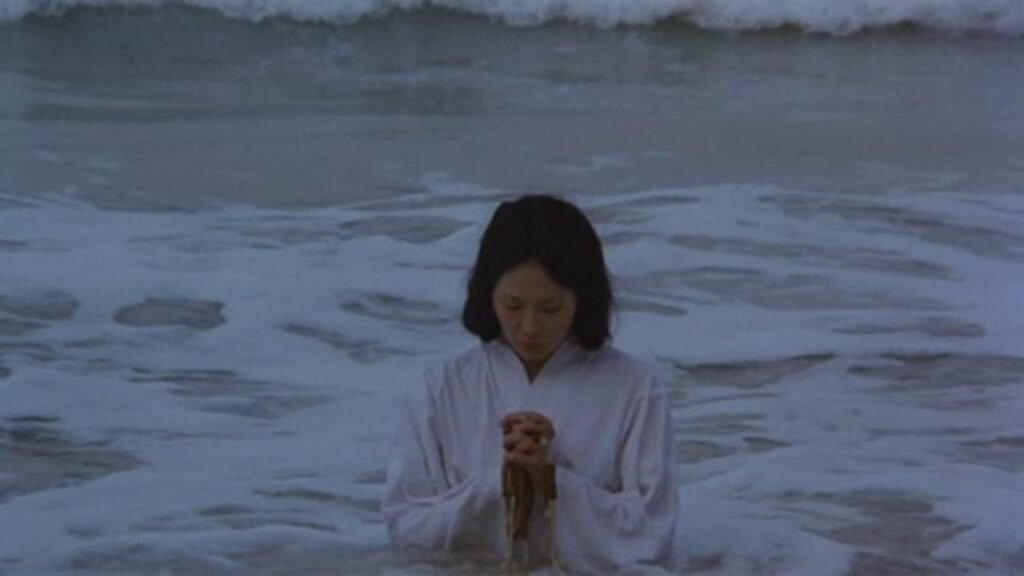
This film is about a priestess who thinks she is the Happyaku Bikuni-sama, the nun that lived to be eight hundred but always looked like a young girl, and her interactions with different men from all social classes leading on towards the borderline between sexual intercourses with consents and rapes while many times she strongly desires to be killed by someone else. Additionally, there is another story about a teenage shrine maiden’s relationship with her boyfriend who keeps pushing her to make love ever since they met till his relocation in order to enter a good university and find nice work. The girl rejects him numerous times because of her dread of sex or males regardless of her love for him. Finally, the boy begins stalking the Nun after watching her sexual activities from behind closed curtains one too many times.
Socio-political hypostasis is what gives the movie its nature of men Happyaku meets; an old victim of atomic bomb suffering from rotting all over his body and was the first to take this woman in his arms; a fugitive Ainu criminal wishing to punish a Yamato woman; a leftist extremist terrorist who opposes nuclear power plants’ construction, and a materialistic middle-aged man, who preys on weak women, forced to rape one young girl while Happyaku watches. Each of them represents a metaphor being quite evident and very illustrative for Japan in 1970s with the last demography being displayed by the boy’s bourgeois dreams in a narrated ending that is rather smartly done analysis.
Wakamatsu also “plays” with religion though, and has mixed Shinto and Buddhist connotations with folklore and myth to add an extra layer of ritualism to the film. He has also been able to blend them all with violence, death and sex which he always did in his movies and did it here too. Blasphemy may be a term accurately used from a Western/Christian viewpoint or even more from the present era which is heavily influenced by political correctness but one should expect this being three somewhat intermeshed elements in Japan’s culture (albeit perhaps more openly). However, this does not make the movie any less extreme or provocative as it contains so many erotic scenes that it could easily be classified as pornographic.
However, the fact that “Eros Eterna” is different from characterizations by Wakamatsu as it uses a cinematic approach, which is really amazing in this case. The whole presentation of the area is wondrous to look at, both by the sea and in different locations of the temple with Hideo Ito capturing it all in its glory while also being assisted by excellent work in coloring and lighting. Particularly the final scene with the boat on fire and the sunset is a wonder to look at, and one of the most beautiful in all of Wakamatsu’s filmography. And yet these are not his only rewarding scenes; this film never drags or speeds up unduly through its entire one hour and 30 minutes run time with Shunji Takemura doing an excellent job editing.
As usual, Eiko Matsuda looks impressive in her role as a protagonist where she can display her curvaceous body as well as revealing a very intricate character who wants to save men under curses through sex and die later. For instance, among male actors Osamu Sakuta (The Boy) and Renji Ishibashi (Radicalist) may have been mentioned along with those who did their best for everyone else involved.
“Eros Eterna” is a film that will most likely be offensive to many when watched today, but it is also one which shows how exploitation and arthouse can be merged in a very artistic manner with quite interesting statements. Moreover, this movie attests to the fact that Wakamatsu can combine his dual personalities of the artist and pornographer with great artistry.
For more movies like “Eros Eterna” visit on solarmovie.







